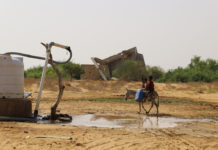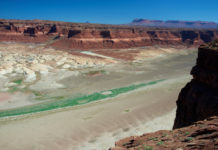Jordan holds the undesired possibility of becoming the first nation – not city or province, but nation – to run out of water. This post on the water crisis in Jordan is part of the ongoing series where we are tracking the global water crisis.

In my initial post on this series covering the global water crisis, we looked at the threat Cape Town, SouthAfrica faces in becoming the first major city in the world to run out of water. This is not the only water crisis threat facing the world. It is not even the direst threat in the global water crisis.
Jordan holds the undesired possibility of becoming the first nation – not city or province, but nation – to run out of water. The Jordan River is the country’s lone water supply and it sits polluted, depleted and some of its aquifers pumped beyond repair.

Sitting between Israel and much of the Middle East Jordan has been a popular target destination for various refugee populations from different sides of the conflicts in the region for more than half a century. Palestinian refugees flocked to Jordan after the 1948 Arab-Israeli War and the 1967 Six Days War. Today, many refugees from the Syrian Civil War have fled to Jordan. In the last decade, 1.4 million refugees have arrived in Jordan to escape the Syrian Civil War.

As a result, the population of Jordan has grown decade by decade even as the rains, already sparse, have declined. The population is too large and too poor for the country to afford to import water like others in the world have done but already the water shortages have produced clashes between native-born citizens of Jordan and the refugee populations. By 1947 Jordan’s population is expected to double.
According to Maysoon Zoubi head of the Higher Population Council and former Secretary-General of the Ministry of Water and Irrigation, ten of the country’s 12 aquifers are almost depleted now. In some locations, authorities are drilling more than a mile below the earth’s surface in search of water.

Jordanian citizens already have one of the lowest water consumption rates in the world, about 3% of what the average American intakes per year. It is only going to get worse. Weather patterns suggest less, not more rain for the next few years and extending for decades. Even before this, however, Jordan was never able to fill its water reservoirs. Jordan receives less than 200 millimeters of rain per year.
Syrian refugees alone have increased the demand on Jordan’s water supply by 21% nationally. In the northern regions that demand increased by 40%.
Additional Reading:
No Shortage of Challenges – Jordan’s Water Crisis (Harvard Business Review)
Water Resources and Environment (USAID)


